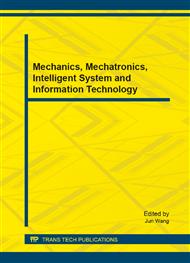p.258
p.265
p.270
p.274
p.279
p.283
p.287
p.291
p.296
Detection of Organic Pollutions Using Artificial Neural Networks and Domain Transform Techniques
Abstract:
This paper presented a novel method for detection of organic pollutions based on artificial neural networks combining domain transform techniques. Domain transform techniques are mathematical methods that allow the direct mapping of information from one domain to another. The most effectively used domain transform technique is wavelet packet transform (WPT). Wavelet packet representations of signals provided a local timefrequency description and separation ability between information and noise. The quality of the noise removal can be further improved by using best-basis algorithm and thresholding operation. Artificial neural network (ANN) is a form of artificial intelligence that mathematically simulates biological nervous system. Generalized regression neural network (GRNN) is a kind of ANN and is applied for overcoming the convergence problem met in back propagation training and facilitating nonlinear calculation. In the case a method named WPT-based generalized regression neural network (WPTGRNN) was used for analyzing overlapping spectra.
Info:
Periodical:
Pages:
279-282
Citation:
Online since:
August 2014
Authors:
Price:
Сopyright:
© 2014 Trans Tech Publications Ltd. All Rights Reserved
Share:
Citation:


